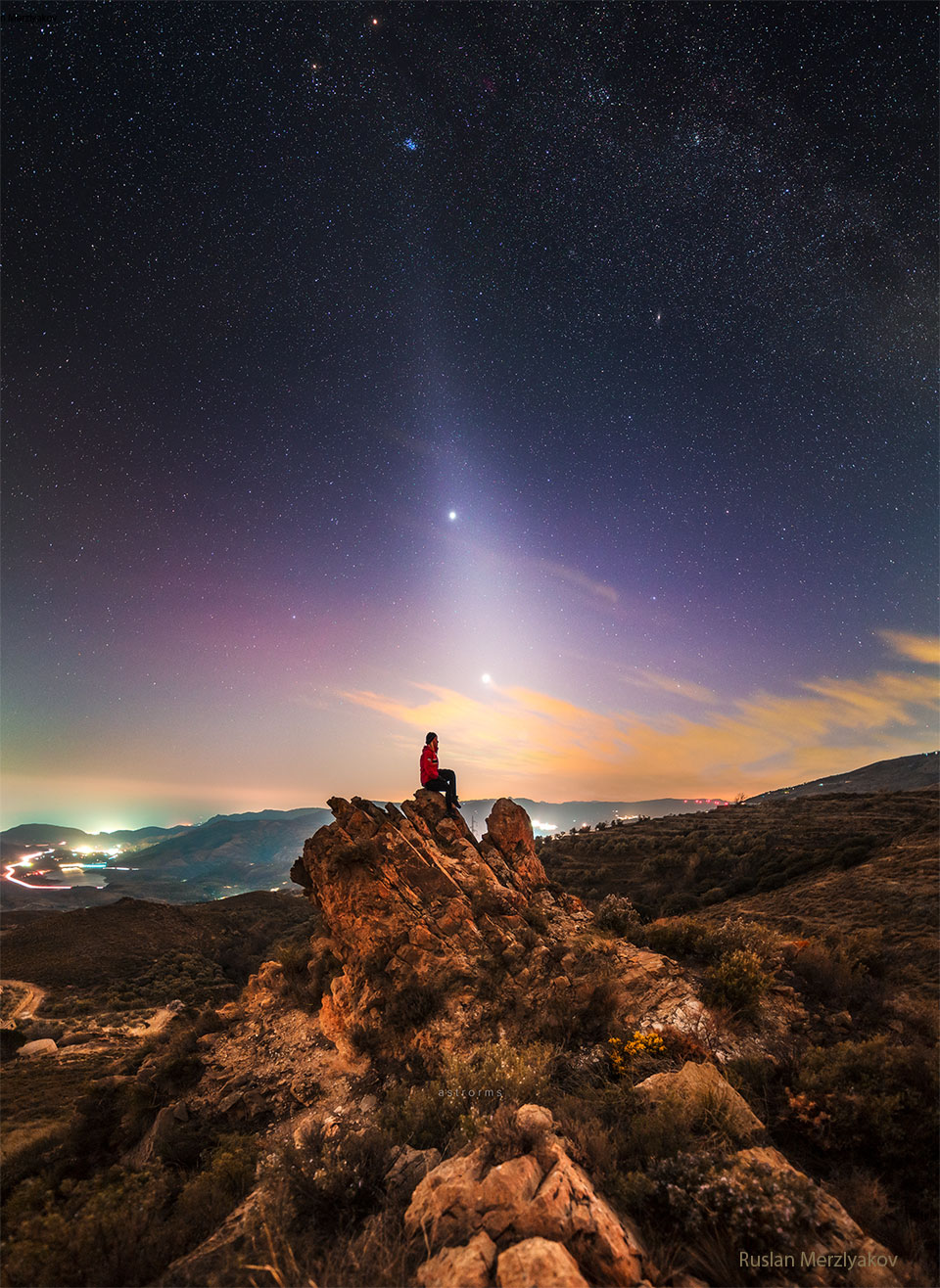안녕하세요, 잡학다식 입니다. 오늘은 과연 나사에서 어떤 방식으로 우주의 형상을 표현해 줄까요?
우선 이미지부터 볼 수 있도록 하겠습니다

해당 사진의 이름은 Zodiacal Ray with Venus and Jupiter 인데요 우선 NASA에서 공식적으로 발표한 설명들을 확인해 보겠습니다
What's causing that unusual ray of light extending from the horizon? Dust orbiting the Sun. At certain times of the year, a band of sun-reflecting dust from the inner Solar System appears prominently after sunset or before sunrise and is called zodiacal light. The dust was emitted mostly from faint Jupiter-family comets and slowly spirals into the Sun. The featured HDR image, acquired in mid-February from the Sierra Nevada National Park in Spain, captures the glowing band of zodiacal light going right in front of the bright evening planets Jupiter (upper) and Venus (lower). Emitted from well behind the zodiacal light is a dark night sky that prominently includes the Pleiades star cluster. Jupiter and Venus are slowly switching places in the evening sky, and just in the next few days nearing their closest angular approach.
이번에도 광활한 우주 앞에 인간이 얼마나 작은 존재인지 다시 한번 알게 되는것 같습니다
저는 내일도 더 좋은 사진과 함께 돌아오겠습니다, 그럼 행목한 하루 되시길 바랍니다
'과학상식' 카테고리의 다른 글
| NASA 나사의 오늘의 이미지들 (2023-03-01) (0) | 2023.03.02 |
|---|---|
| NASA 나사의 오늘의 이미지들 (2023-02-28) (0) | 2023.03.01 |
| NASA 나사의 오늘의 이미지들 (2023-02-26) (0) | 2023.02.27 |
| NASA 나사의 오늘의 이미지들 (2023-02-25) (0) | 2023.02.26 |
| NASA 나사의 오늘의 이미지들 (2023-02-24) (0) | 2023.02.25 |